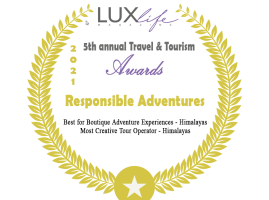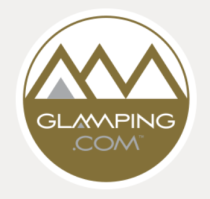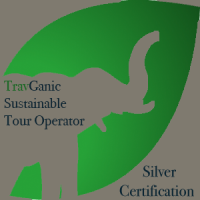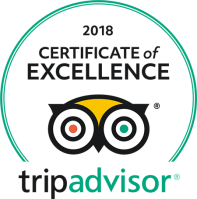Cultural Do’s and Don’ts in Nepal
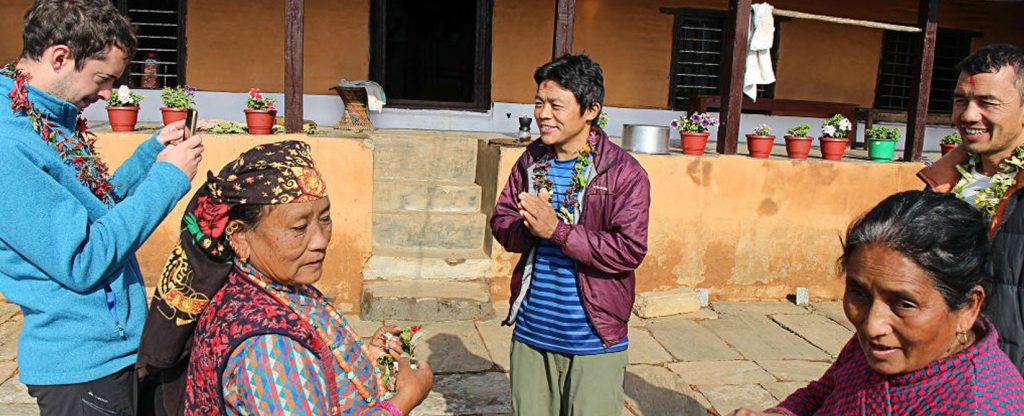
Cultural Do’s and Don’ts in Nepal Respect the culture of Nepal as if it was your own culture! A mindful traveller is always concerned about the dos and don’ts of a country they visit for the first time. What to expect from that culture and what is taboo is of utmost curiosity in their mind. Whether trekking in the mountains or going around in cities and towns, you do not need to worry too much as The Nepalese are gracious hosts and have been used to tourists for long enough not to be too offended if they make mistakes. We usually laugh it off. Here are pointers to keep in mind. Greet anyone of all ages and at all times of the day with “Namaste,” we will say Namaste back or at least give you a broad smile. Women in villages are not used to shaking hands, so join both palms and greet them with Namaste. There are a few versions of Namaste’s meaning, one of which is – I bow before you. Take your shoes off when visiting a home, Temple, or Monastery, and cover up your legs and upper arms. Avoid smoking inside sacred institutions. Avoid touching offerings or holy objects. Ask for permission before taking photos; if possible, avoid using flash. Always go clockwise when walking around religious monuments, keeping the monuments to your right side. Use both hands, whether giving or receiving, as a gesture of respect, even if it is money. It is good to bring a Polaroid camera if you plan on taking photos of people. I think it is fair that you give a Polaroid photo to the person after taking their picture with your smartphone or camera; that way, they have something to remember you by. Do not point your finger at a person, especially at religious monuments; instead, use the flat back of your hand to indicate the person or a sacred object. Also, please do not use your foot to point at anyone or anything; it is the ultimate show of disrespect. Use your right hand if you need to use your fingers to eat, as the left hand is considered unclean. You are eating something delicious, and you want your Nepali friend to try or when you cannot finish your plate of food – Do not offer it to a local. Food, once eaten by someone else, is considered impure. It is common to see two guys holding hands, as they are good friends, whereas a man and woman holding hands or showing affection is frowned upon. Remain calm and do not raise your voice or show anger. It is considered an offensive manner, and it can only worsen matters. If a child asks for a pen, money, a balloon, or even food – refrain from giving them. It all started with early travellers to Nepal with good intentions. But, unfortunately, they saw how little the children had here and gave them pencils, pens, bubble gums, etcetera; this has taught children to beg. Do not bargain for room or food while on a trek; it is only a matter of pennies. To you, it is a game to see what you can get away with; to the lodge owners, it is their livelihood. Would you please respect that? These practices are similar in Bhutan, India, and Tibet. Note: Do not buy antiques or/and products made from endangered animals; you can end up in jail.
Are solo women travelers safe in Nepal?
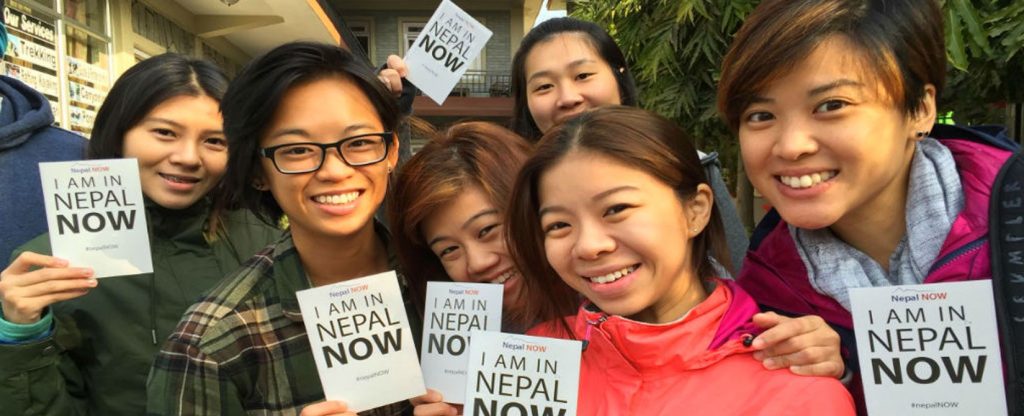
Are solo women travelers safe in Nepal? Your safety is our utmost priority! You will notice that you are interested in the locals because you are a foreigner and your gender. However, you soon start seeing that they are just as curious about male visitors. Here are a few helpful tips for a woman who is travelling solo. Most parts of Nepal are generally safe and secure for women travellers. The Nepalese are curious but tolerant simultaneously rather than a threat or danger to single travellers. You might come across some young men in bars who fancy themselves as Casanova in towns and cities, but most Nepalese men, especially in the villages, are chaste and very modest; they are primarily respectful and welcoming to foreign ladies. Sexual Harassment It is pretty unlikely to encounter sexual harassment that could upset your travels: you might get the occasional staring, catcalls, or even an attempt to brush against you in a crowd, but it is nowhere near as bad as in India or some North African countries. It is better to avoid revealing clothing, cover up your legs, wear loose dresses, etc., to prevent unwanted attention. It is safe to go trekking on your own if you have done it before and are experienced. However, some individual trekkers go missing, never to be found again. There have been attacks and murders of solo women trekkers in the past. It is advised to take a guide with you if you are on your first trek. You need to choose the right guide; it is recommended that you meet several guides and ask their bosses if the guide has been reviewed on Trip Advisor, etc., so you can read about previous trekkers’ experiences with the guide. It will be a disappointment if the guide who is supposed to be your protector turns up being an annoyance from sexual advances. Ask the guide you have chosen if he is married and if he has kids; talking about his family on the trek discourages the guides from making sexual advances. If you want to have a relationship with a Nepalese man, there is a long tradition of women travellers falling for their trekking or rafting guides. If you want to travel with other female travellers, you can quickly meet them at renowned restaurants, bars, and clubs in cities like Kathmandu and Pokhara. It is always safer to have company if you want to trek without a guide. Family-run guesthouses in towns and villages are the right place to chat with local women. It is best to bring your feminine necessities such as panty liners, tampons, or sanitary pads (this can be helpful to even a guy) In one group, some members had caught the stomach bug in Delhi before coming to Nepal; while most recovered in a couple of days, one guy suffered from loose motion for longer. Finally, he confessed to using his wife’s sanitary pad, saving himself from soiling and embarrassment. If you visit Nepal for the first time and want safe accommodation, always opt for hotels or guesthouses near or in the central tourist areas close to transport hubs. Investing in a mid-range or highly recommended hotel is better for first-time visitors. Many of these hotels offer complimentary airport transfers. Paknajol is a famous area in Kathmandu, while the lakeside is the central tourist hub in Pokhara. If you are looking for a place to stay in Chitwan, then the main road has hotels, lodges, and resorts for all budgets. Always carry a flashlight with you and avoid walking alone in the dark, isolated streets to be on the safe side.
The differences between Luxury lodges and Teahouse lodges in Nepal
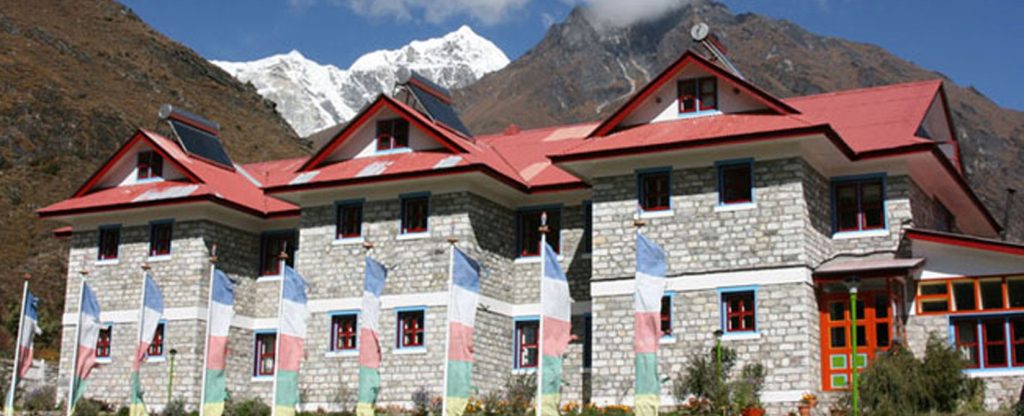
The differences between Luxury lodges and Teahouse lodges in Nepal Updated July 2021: The Comfort/luxury lodges are excellent for social distancing and small personal bubbles as they won’t be crowded. The standards of luxury lodges in the Everest and Annapurna regions are far higher than regular teahouse lodges with their landscaped gardens. They are often in superb locations with mountain views. Their comfortable dining room and bedroom with attached bathroom, including a hot shower and western toilet, are some of the “luxuries – by Himalayan standards.” The staff is professionally trained in hospitality. The highest level of service is provided to our customers. You can get a room with a private bathroom in some of the standard teahouse lodges. The newer lodges are being constructed with these amenities these days. In contrast, only significant settlements like Namche Bazaar on the Everest Base Camp trail or Manang on the Annapurna Circuit trail had rooms with ensuite bathrooms in the recent past. The standard lodges often have basic rooms with plywoods for walls with a dining room with wood or yak dung burning heater to warm the communal area in the evenings. Most lodges have shared showers, ranging from Solar-heated or gas-heated water, while in the higher elevations, you get a bucket of hot water for an extra cost. The cost of the showers can be as high as US$5. What will toilet and bathroom facilities be available on a Nepal trek? For example, is it possible to wash your hair? The quality, service, and standard of the regular teahouse lodges range widely. The wide range depends on the location; for example, the lodges in the higher elevations or places where the flow of trekker traffic is low have more basic amenities. What sort of food is served at the luxury lodges? The range of food in a standard lodge’s menu ranges from local staples such as dal bhat (boiled rice, lentil soup, and seasonal vegetable curry), momo (dumplings that are filled with meat – when available, primarily vegetables, canned tuna, cheese etcetera) and if you are the Everest region, the well known Sherpa stew. These days the menu is getting more varied. You can also get international food such as spaghetti, macaroni, burgers, french fries, chow mien, fried rice, and even pizza. In addition, they have oat porridge, granola, muesli, toast (if you are in a busy area and during the primary season), chapattis, Tibetan bread, and eggs prepared in various ways for breakfast. Some advice for all trekkers is: Although the menu’s food is similar to what you are familiar with, expect it to taste different from what you are used to back in your home country. Also, avoid eating meat in the Everest region, as the animals are slaughtered a few days before reaching the trekking lodges. The food in a luxury lodge will be similar; however, it will be of much higher quality and serve meat dishes that are safe to consume. In addition, they usually do dessert after dinner. One of the benefits of the luxury lodges is being served unlimited hot tea or coffee, and you might even get a cake with your hot drink in the afternoons. Responsible Adventures has a comprehensive program of luxury treks in Nepal, such as Everest Luxury Lodges, Annapurna Luxury Lodges, and Luxury Kathmandu Valley Rim. The Luxury Everest Base Camp trek we offer combines luxury lodges lower down and the best available standard teahouse lodges higher up near Base Camp. Whether you choose our regular or luxury lodge treks, our team enhances your experience by providing nutritious meals that include superfood as part of our value-added Wellness trekking vacations. As a result, our overall “outside the box” experiences are an unmatched luxury. We also organize an extensive choice of standard trekking packages in Nepal. Please get in touch with us if you need more information or further advice.
Why go trekking in Nepal?
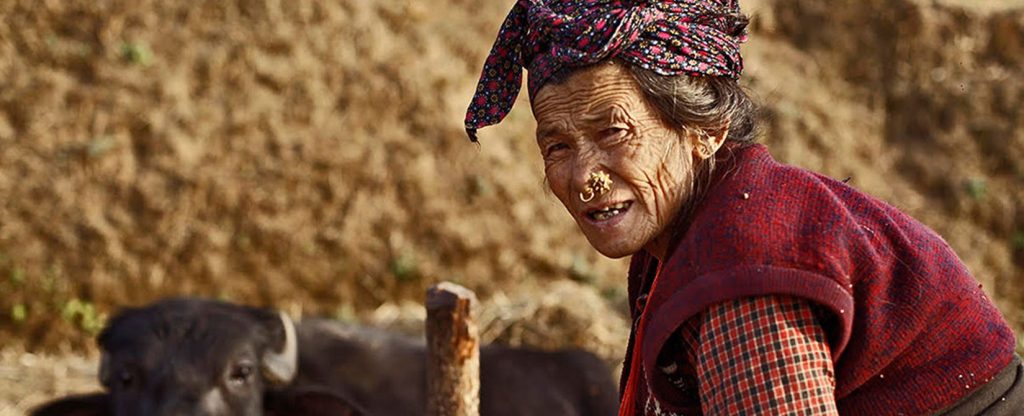
Why go trekking in Nepal? A tiny percentage of people go hiking/trekking in their home or neighbouring countries, and an even smaller percentage go trekking in Nepal. So do a trek in Nepal and be a part of this super-elite club. Nepal has 8 of 14 mountains that are above 8000 meters. Nepal is home to the highest peak in the world – Mount Everest. Nepal is known as the adventure capital of Asia. Nepal is healing from the economic damages caused by the COVID-19 pandemic; every dollar you spend on the trial helps the local economy. Nepal has trails for people of all ages and fitness levels. Trekking is an excellent way to exercise and lose weight in a beautiful setting – much more fun than working out in a gym. Nepal has very diverse ethnic and cultural groups with deep, ongoing traditions. Trekking brings you up close and personal with them for cultural immersion. People are super friendly towards visitors and are always smiling. There is a network of trekking trails all over the country. In addition, a Great Himalayan Trail has been identified, which traverses Nepal east to west. You can trek for a few hours or go on for many days, depending on your time, fitness level, and outdoor experience. You can combine trekking with visiting world heritage sites, white water rafting, kayaking, canyoning, bungee jumping, zipline, mountain biking, paragliding, ultralight flights, jungle safari, yoga, meditation, helicopter tours, and visiting important pilgrimage sites. Annapurna Trekking trails bring you right into the Annapurna Base camp (4130 meters) and Thorong-La pass at 5416 meters. Thorong-La is one of the most trekked passes in the world. Nepal has four seasons. Each season presents unique colours and flavours. Nepal has been called “The jewel in the crown of the trekking world” – by a prominent blogger and adventurer Mark Horrell. The Annapurna, Langtang, and Everest are the only places in the world where you get a hot meal and basic to comfortable accommodation. Trekking is an excellent way to watch birds in their natural habitat. Wildlife spotting is an additional activity to enhance your trekking experience. Trekking produces endorphins, which help reduce stress. While trekking in Nepal, you can help prevent health issues such as diabetes, high cholesterol, and high blood pressure. You can visit some ancient Monasteries between 300 – 600 years old. You can do meditative walking during your trek. There will never be a dull moment while you are trekking in Nepal. Find out the list of all trekking in Nepal packages. Photo Courtesy: Yusha PunCheck out our Trekking packages for Nepal, Bhutan, India, and Tibet.
The History of Trekking in Nepal
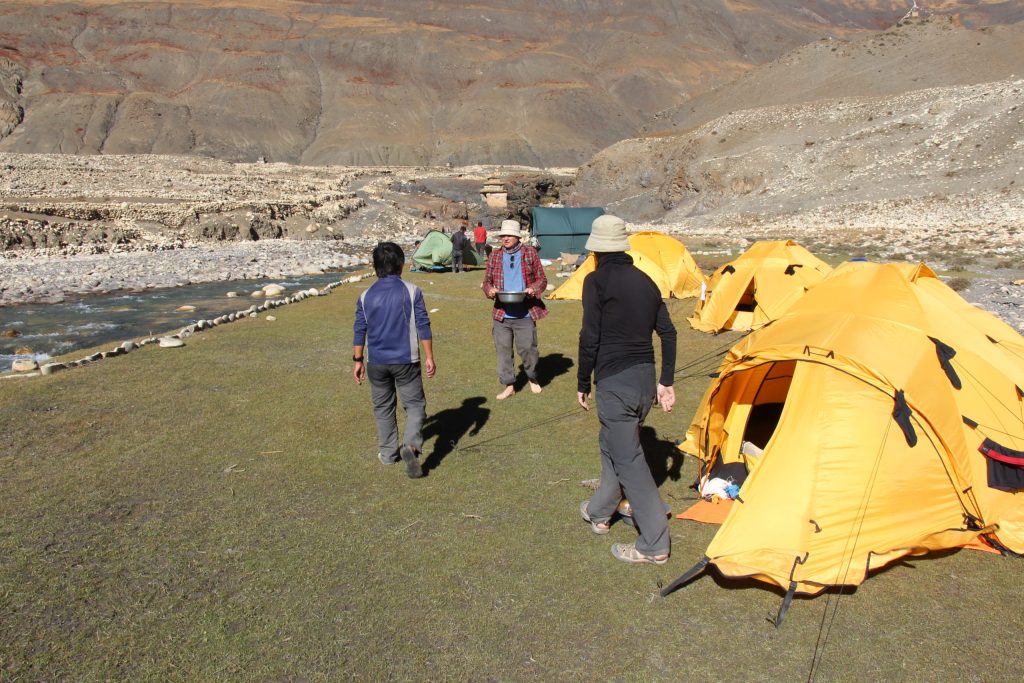
The History of Trekking in Nepal The word trek was adapted from the Afrikaan’s word trekken, which means to haul or pull. So the Dutch settlers of South Africa spoke it. It means a long, challenging journey. The Nepalese had been walking to get anywhere in this mountainous nation for several centuries. Enchantment with the mountains has existed in humankind for as long as it can be remembered. Nepal’s trekking history began with mountaineers’ teams who came on expeditions to climb the majestic peaks. Nepal became known as a trekkers’ paradise when British adventurer Bill Tilman managed to get permission from the then King to go on several treks in 1949. He explored the Kali Gandaki, Helambu, and Everest regions. Maurice Herzog was another early visitor to Nepal. He led a successful French mountaineering expedition on Mount Annapurna 8091m. The Americans in 1950 and the British in 1951 led mountaineering expeditions to Mount Everest. Colonel Jimmy Roberts, a retired Gurkha Officer and a Military Attache at the British Embassy in Kathmandu saw great potential in trekking as a business. He had spent a great many years hiking in the hills of Nepal. He even accompanied Tilman on his first exploratory trek. As a result, Jimmy Roberts founded Mountain Travel, Nepal’s first trekking company, in 1964, giving birth to Nepal’s mountains’ commercial adventures. His idea was revolutionary for that era. The trekking expeditions were done in a fully supported camping style. The clients were accompanied by a Western leader and a Sherpa support team from a Sirdar (foreman), his assistants, a cook, kitchen boys, and numerous porters to carry all the camping equipment and food. This trekking style in Nepal made it a luxurious experience and possible for a more adventurous to whom the price was no object to visit Nepal in ‘comfort.’ Mountain Travel remained Nepal’s only trekking company until 1968. The first commercial trekkers were three American ladies who were expatriates in Calcutta. These ladies were a sporting trio of enthusiasts, according to Jimmy Roberts. He was joined by Mike Cheney and Dawa Norbu Sherpa at Mountain travel. Sir Edmund Hillary stated, “Nepal is the only country in the world which is also one of the world’s great trekking paradises and one of the nicest countries in the world for trekking.” His overseas pioneer partners were Allen Steck, Barry Bishop, and Leo LeBon from the U.S.A and Australian Warwick Peacock, the owner of “Ausventure.” They began sending clients from their respective nations regularly to trek in Nepal. Mountain Travel inspired other tourism entrepreneurs when their business prospered; this was the beginning of more trekking and adventure companies starting in Nepal. Trekking is famous as it is less taxing physically than mountaineering. It was not easy in those days, but they managed to lure the rich and the famous into this mysterious and remote Kingdom with vivid imagination and creativity. Despite the disadvantages of using telegram, and crackly telephones, Nepal became trendy and a sought-after destination for American and European adventurers. Nepal became a regular visiting destination for superstars and celebrities as they could enjoy privacy in the peace of the mountains of Nepal and away from the media coverage. At Responsible Adventures, we have been working on innovative and pioneering ideas to keep this tradition alive to provide exceptional experiences to the trekkers who value their trekking vacation. Some quotes from our pioneering ancestors of tourism in Nepal, “I would rather handle half as many tourists with each spending twice as much,” was Jim Edwards’ mantra. Moreover, Jimmy Roberts used to rue: “Why are we selling our beautiful mountains so cheap?”
High Altitude Myths
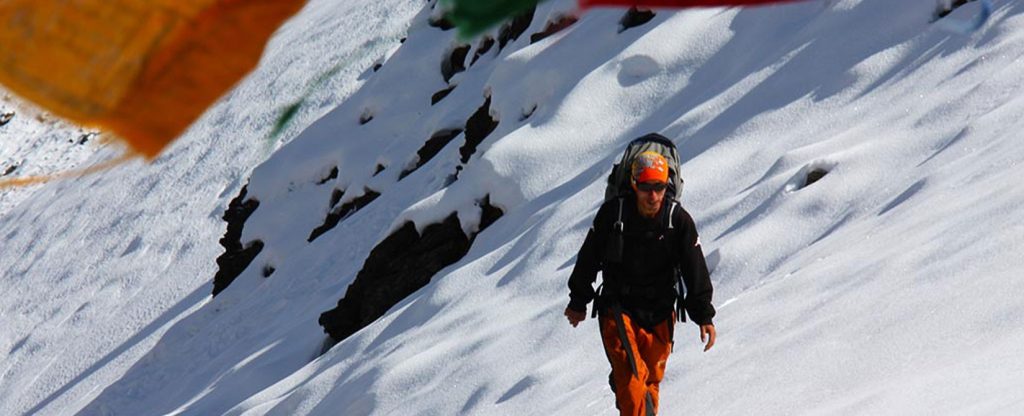
Myths about High Altitude Myth no. 1 – Do not use caffeine at altitude. Caffeine is a mild diuretic (it makes you pee), which shouldn’t concern you because it might dehydrate you and cause AMS. This will only be true if you drink many pots of very strong coffee and no other fluids. Caffeine could help in altitude as it stimulates your breathing, brain, and kidneys. Another point is that if you are used to having several caffeinated beverages, a profound headache can be caused if stopped abruptly. Myth no. 2 – Diamox masks symptoms of altitude sickness. Diamox doesn’t mask symptoms of AMS when taken as prevention. It contains carbonic dehydrates, which make you urinate bicarbonate. This stimulates your breathing as it makes your blood more acidic, which makes you take more oxygen. It enhances your natural acclimatization process, and you won’t have rebound symptoms if you stop taking it. It is used as a preventative measure and a cure for Acute Mountain Sickness. Myth no. 3 – Physical fitness protects against altitude sickness. Physical fitness does not protect one from altitude illness. Many young fit athletes push themselves too hard at altitude before acclimatizing as they can go through the discomfort. Being fit and healthy, they think it can’t affect them, hence ignoring altitude illness signs. Everyone is susceptible to AMS, regardless of fitness levels. Myth no. 4 – Drinking extra water will protect you from altitude illness. Symptoms of dehydration are similar to AMS, so staying hydrated is important at altitude. You only need an additional litre to a litre and a half of water at height. However, too much water is harmful and can dilute your body’s sodium level, which causes weakness, confusion, seizures, and coma. Check the colour of your urine. Clear urine means you are adequately hydrated, while dark urine suggests dehydration and the need to take more fluids. Myth no. 5 – Children are more susceptible to altitude illness. Studies have shown that children have similar rates of AMS as adults. There is no evidence that children are more prone to altitude. If you follow the basic rules of acclimatization with a healthy child, they will do pretty well at high altitudes. The main worry is that they might not communicate their symptoms when suffering from altitude sickness. Just like adults, children with AMS bounce back real quick with treatment.
How to choose the best trekking company
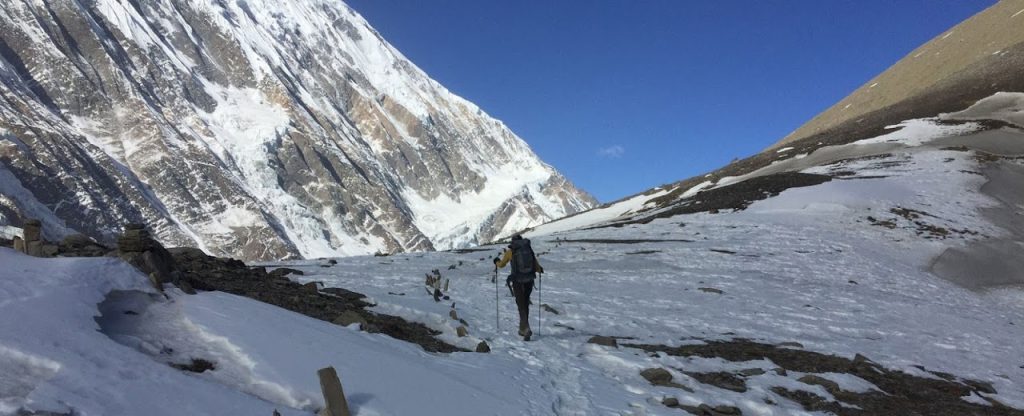
More than two thousand trekking agencies in Kathmandu alone and a few hundred registered companies in Pokhara. Finding the right tour operator can become challenging when you add several hundred hotels, guesthouses, and numerous unregistered operators offering trekking services. You work hard throughout the year, and a vacation is a well-deserved reward for yourself, so make sure you find the right company to make your trekking experience memorable. Some Tips on Choosing the Best Trekking Company Check if the company has a government license and has completed a registration procedure with at least one umbrella organisation, such as the Department of Tourism in Nepal, the Nepal Tourism Board (NTB), or the Trekking Agencies Association of Nepal (TAAN). Although this does not guarantee you will have the best experience, it will assure the company’s commitment to your welfare and that of its staff. The agency should be professional and straightforward in communicating with you, clearly answering any questions you may have concerning the trek. The quality of English on a website can also indicate how professional a company is. During communication, bear in mind that English may not be the first language of a local company representative, but look out for unprofessionalism or unreliability. Ask the company what its Unique Selling Points (USP) are and how it differs from other companies. Ask what the safety standards are for the company and what it does to implement its policy. Ensure that the company has high and up-to-date safety standards and is adequately equipped for all treks. You can also learn about a company’s health and safety standards by visiting its website, emailing its previous customers, or checking online reviews. Make sure you have a reliable, competent, and medically trained professional trek leader. It would be best to have full assurance that your trek leader can handle any adverse situation on the trek. Does the company use a Portable Altitude Chamber (PAC) or oxygen on its tours? If so, ensure that the trek leader’s training is up to date by asking when they completed the Wilderness First Aid refresher course. When on tour, you should ask if the trek leader knows how to operate such equipment properly before it is used, as misuse can lead to more harm than good. Do you know someone who has been on a trekking tour in Nepal? They might have a recommendation and some exciting stories about the visit. You can also look up reviews and testimonials from previous clients of a company. Some testimonials will include the reviewer’s email address, and you can always write to inquire about an individual’s experiences with a company. Of course, most people are busy with their everyday lives, but one or two reviewers may respond to you with helpful information. Carefully check the trip cost and inclusions to avoid any hidden charges. Make sure the trek’s price covers all or most of your requirements. Everyone loves a bargain but avoid companies that stand out as cheap compared to others, as they might not consistently deliver what is promised or even make their main profits through other means. Remember how much you paid for your international airfare to get here; you do not want to be thrifty for the most crucial part of your vacation, from a few days to a few weeks. Therefore, cheap companies are most unlikely to be the best. However, due to their localised expertise, a mid-range company can be better than the more expensive tour operators. Please look at this article about trekking companies that profit by convincing clients that they need a helicopter evacuation before completing the trek! Also, read about the discussions on TripAdvisor’s forum about Helicopter scams in Nepal. Determine whether the company offers fixed group departure dates if you intend to join a small group. Consider the background of the founders of the company. Do they have experience as trip leaders and a passion for the outdoors? If so, they may be more dedicated to ensuring the best experience for you than someone in the business to make money. Years of experience make a difference. The length of time a company has been in business can indicate its standards, but only if it continuously improves its services and trekking experiences. Be a responsible trekker and determine if the company has Responsible Tourism policies. Confirm that the company is dedicated to its staff’s welfare, including porters, and organises treks in a way that minimises the negative impact on the environment.
How to spend two days in Kathmandu
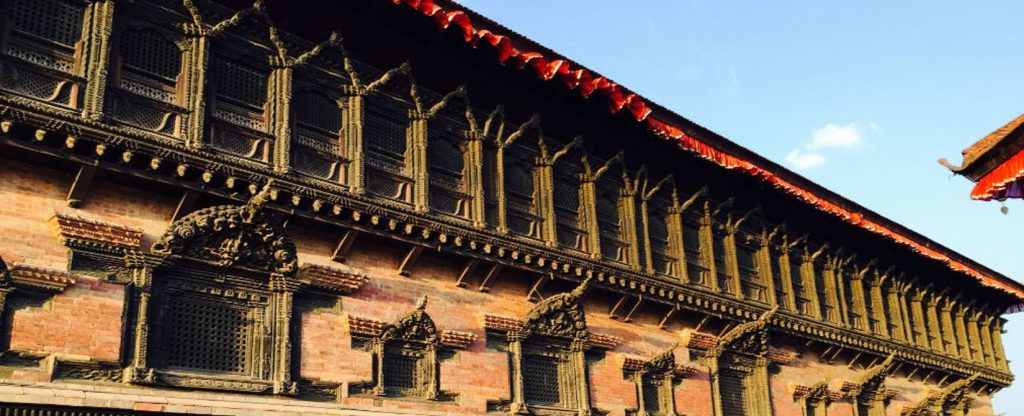
Some fun ways to spend 48 hours in Kathmandu, Nepal Adventurers come to Nepal from all over the world. Almost all Nepal trips involve spending time in Kathmandu before your adventures. You can spend time exploring ancient monuments, Royal Palaces, and the maze of streets. Kathmandu is known for being overcrowded with heavy traffic, dust, and pollution. Yet, there is grace beyond all the madness. Kathmandu is home to some of the most charismatic shrines in the narrow streets, ancient temples, along Buddhist Stupas that have earned World Heritage Site status. Get your bearings Kathmandu Durbar Square, the old city, is in the heart of Kathmandu. Thamel, the central tourist district’s maze of shops, hotels, restaurants, and trekking agencies, is north of Kathmandu Durbar Square. The Bagmati River borders Kathmandu and Lalitpur districts to the south. Lalitpur means the city of fine arts, great for great artwork, wood carvings, paintings, and handmade statues. The up-market shopping centres and foreign embassies lie in the city’s eastern part. Bhaktapur Durbar Square, a living museum, lies 13 km east. It is an exciting place where you can easily spend half a day wandering around the maze of ancient streets. You can get around by walking, hiring a bike, taxis, rickshaws, feeling adventurous, and going on a local bus. Day 1: Walking tour of Swayambhunath Stupa and Kathmandu Durbar Square. You can take a taxi to the bottom of the stupa and walk up the 400 steps to Swayambhunath Stupa, also known as the Monkey temple, because of the Rhesus’ sheer presence of macaques. You can get a great view of the sprawling Kathmandu valley. The climb up the stairs makes it a worthwhile trip to this 5th-century monument. The entrance is approximate $3.00. You can walk down the steps and head towards the Kathmandu Durbar square via the back streets of Kathmandu, which can quickly take you back a couple of centuries. This world heritage site has palaces, shrines, and temples built between the 12th and 18th centuries. You can mingle with the flower sellers, hawkers peddling souvenirs, other tourists, and orange-clad Sadhus or hermits. The entrance ticket is about $10. Next, you can walk towards Thamel via Ason, the old spice market on the crowded narrow streets with numerous shops, and have lunch at Thamel. Try out the local cuisine of momo – steamed or fried dumplings with meat or vegetable fillings. Retail Therapy There is a lot of shopping in Kathmandu; it is a shopper’s paradise. You can buy anything from prayer flags and singing bowls to wooden sculptures to hand-painted Thangkas. Thamel has many shops selling cheap locally manufactured or international brands of trekking gear. It is also great for buying music or movie DVDs and books. Dinner with Cultural Shows There is Thamel house for an evening of cultural show and Nepalese meal, or you can take a short 15-minute walk towards Jai Nepal movie hall to Utsav Restaurant. They hold daily cultural performances, and you can have a set Nepalese dinner for around $15. The cultural show presents dances from various ethnic groups of Nepal. The meal is quite an elaborate spread. Day Two: Mountain Flight The one-hour mountain flight in a turboprop aircraft is considered one of the world’s best scenic flights. Buddha Air and Yeti airlines operate this early morning from the domestic terminal of Tribhuvan international airport. The current airfare is US$190. If money is no object, you can charter a helicopter and fly above Everest base camp, stop for a few minutes at Kalapathar 5400meters to take photos, and pass down to Kongde ridge for a champagne breakfast at the highest resort in the world for an experience of a lifetime. This costs $8000 to be shared by up to 6 persons. Great breakfast option. You can take a taxi to the legendary Mike’s breakfast. It is an institution and is very well known in Kathmandu. There is a great variety of American and Mexican breakfasts on the menu. Don’t forget to try the ultra-delicious Eggs Benedict and their great pancakes. Boudhanath Stupa Boudhanath Stupa used to be the world’s largest stupa and is still one of the biggest. You can witness pilgrims and tourists going around the stupa in a clockwise direction. You can also hear the Buddhist chant of Om Mane Padme Hung being played by the numerous music shops. Thus, you can enjoy peacefulness just a few meters away from the chaos of the city. The entrance fee is $2. Souvenir shopping Now is the time to go crazy shopping for gifts and souvenirs you have been eyeing since your arrival. Shop till you drop and help the local economy! Pubs and Bars Thamel is a great place for bar hopping in the numerous pubs, and the nightlife there is vibrant. You can try Sam’s bar, or if you happen to be there on Tuesdays or Fridays, visit the House of Music behind Hotel Malla. HOM holds open mike on Tuesdays, and they have live cover bands on Fridays. Sometimes they also host touring international bands. Dining with the locals There are so many dining options in Kathmandu. Try the pizza at Fire and Ice or Italian at the Alchemy, Korean, or Japanese, or if you feel lazy, you can order takeaway from Foodmandu.com. You can also experience fine dining at the Chimney Restaurant. In Conclusion You will wonder where the 48 hours flew and made you ready for a more extended visit to Nepal soon.
Top reasons to go trekking in Nepal during the off season
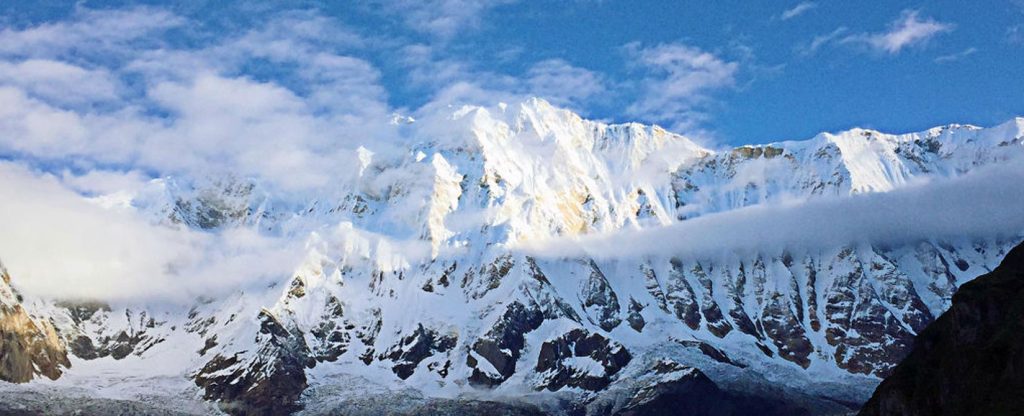
It is widely established that the Nepal Himalaya’s peak times are October–November and March, and April. However, trekking during the less busy season has its advantages. There are two recognized off-peak seasons for trekking in Nepal – the winter and the monsoon. The benefits of going on a trek during the low season. The trails won’t be busy with other trekkers, and you won’t have queues to shower at the lodge. Sometimes you could be the only trekker in the hostel. Trekking during the off-season is my favourite period. Trekking during December, January, and February. The colder winter months mean the clouds rise later to cover the beautiful mountains that Nepal is famous for. Winter is often the clearest time of year due to the colder temperatures. Sometimes the hills stay visible for days on end. Won’t it be cold, and what about snowfall? It can be crisp to cold in the mornings, depending on how high you are. However, you will warm up as soon as you start your day’s hike; you could even be sweating while walking. Have warm layers of clothing in your daypack to layer up when you stop for lunch or at the end of the day. In the evenings, the lodge owners light up the heater in the dining, which should keep you nice and toasty. We receive precipitation a few days every month except during the monsoon, when it rains more frequently. You might get snowfall in the higher altitudes, usually above 3000 meters, but it melts away in a couple of days. You might think to be at the base of the world’s highest mountains; snow could cover the trails and make it risky to trek. Remember that Nepal’s latitude is similar to Cairo and Miami, which is not too far north of the equator, making it much less cold than Europe or North America. You would still have to be careful when you come across frozen streams and might encounter icy parts on the trail early in the mornings or where the sun doesn’t shine much. Believe it or not, Nepal receives more snowfall during spring than winter. Therefore, an added benefit of winter trekking is that you will burn more calories as your body keeps you warm. Trekking in Nepal during May and June It can be pretty hot in the lower elevations of your trek, but it starts being more refreshing and pleasant as you gain altitude. If you are going to a height above 4500 meters, you will see many flowers in bloom, and it is green everywhere. You will also see beautifully colourful moths of all sizes during these months. Another benefit of this trekking during May and June will be burning calories; as it is warmer, you will sweat more, which means detoxification. Trekking will lack other trekkers and no queues to go through narrow trails or cross bridges during the end of the season’s most significant benefit. You will feel like you have the hills entirely to yourselves at times. You will walk through peaceful villages and their farmland, take your time to stop to observe the villagers go about their daily lives, and photograph them. Don’t be surprised if you are the only one at some lodges. The lodge owners won’t be as busy as during the peak season; some like to mingle with you. You could learn about their lifestyle, ask them how tourism has helped them, etc. This could be the beginning of a new friendship. If you are travelling with a small group, you can have leisurely meals, chat, and discuss other trekkers without being self-conscious. Weather Patterns The weather is the most significant concern for those planning to trek during the off-season. The weather in the mountains is unpredictable – more so these days with the effects of global warming. You can be fortunate to see glimpses of the majestic peaks even during May and June. There have been some years when severe weather has affected Lukla or Jomsom’s flights for up to a week during the best times of October and November. I led two treks in July 2017 – one to Helambu and one to Annapurna Base Camp. The Helambu trek was great because we barely saw a total of 10 other trekkers for the entire seven days we were there. We often had lodges to ourselves. The lodge owners were grateful for the income we brought to them during the off-peak season. Unfortunately, we didn’t get to see any snow-clad Peaks. It rained on us for some part of the days – mainly during the afternoons. It rained on us a few days during the monsoon trek to Annapurna Base camp. However, when we were at Machapuchare and Annapurna base camp, the clouds opened up, and we were rewarded with stunning views of the mountains. Unlike in Helambu, we were surprised by how busy the trek to Annapurna Base camp was. As mentioned before, the weather in the mountains is unpredictable. Hundreds of flowers also greeted us, and we enjoyed eating wild herbs and vegetables that only grow during the monsoon season. The scenery was lush green on both these treks. While trekking during the summer months, you will see farmers working their land or crops growing on their farmland and wake up to the song of birds in the morning. Can’t trek during the peak season? Don’t despair if you can take time off to trek during the peak season. You can avoid the crowds and have the trail, hills, and lodges to yourself. Consider visiting Nepal to do a hike during the off-season months of December, January, May, and June or even during the monsoon months of July and August. Mother Nature is always beautiful; we must find positive aspects of what lies in front of us. As the saying goes – “If life gives you lemons – make lemonade.” Happy trekking! Do I get a discount when I go trekking during the offseason? The answer is no. You don’t get discounts when you go trekking during the offseason
What you need to know about high altitude sickness.
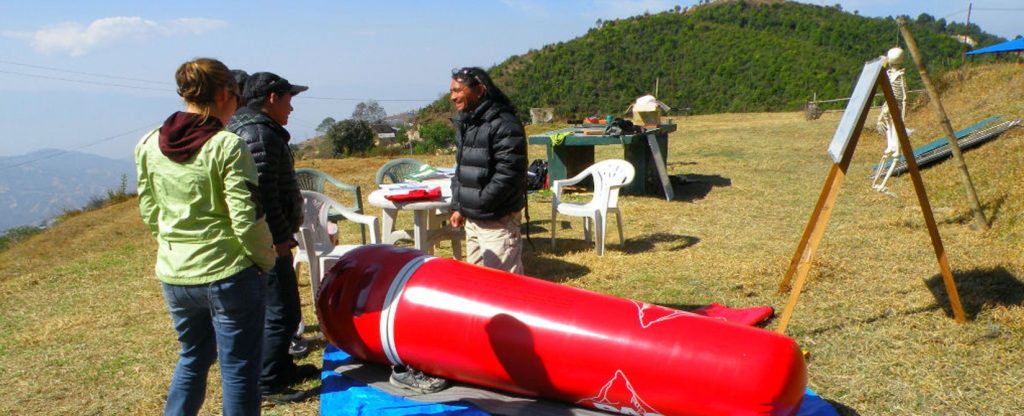
Trekking in the Himalayas is a favourite bucket-list item for adventure lovers worldwide. Sadly, such trips have turned deadly in the past due to ill-preparedness and recklessness when trekkers have died of altitude sickness. Altitude sickness strikes you if you are ill-prepared, and it doesn’t matter if you are trekking on your own or have booked a trekking package with a tour operator. We’ve all heard of altitude sickness—but how often does it turn deadly? Here’s what everyone is travelling to high elevations to know. What is altitude sickness? Rapid Ascend Altitude sickness is also known as acute mountain sickness (AMS). People ascend rapidly without giving their bodies enough time to get used to the reduced amount of oxygen in the higher elevation. Our bodies are equipped differently to adjust to make this adjustment, but it takes more time than others. AMS’s mild signs and symptoms are headache and nausea; fortunately, for most sensible people going to high altitude in a controlled ascent, this is as bad as it gets. It will progress further if a person keeps going to a higher elevation. It can lead to dizziness, difficulty breathing even while resting, vomiting, ataxia, fluid accumulating in the lungs (HAPE), and swelling around the brain (HACE) – all of which can be fatal if not treated as soon as possible. Young, fit people—are at higher risk. The individuals usually struck by altitude sickness are those who fly in from the lowlands and continue climbing higher without stopping to allow the body to acclimate to the altitude. The recommended guideline is not to go above 300 meters above 3500 meters in elevation and stop for an acclimatization day every 1000 meters. It’s common to have a headache and not feel great for the first few days you’re in altitude. Luckily, those symptoms usually pass after a rest day for acclimatization. One reason young, fit people may be at risk for more complications is because they may continue to push themselves. It doesn’t matter if you come in last in your group. It will help if you enjoy the scenery and environment you are in and do not suffer. If you have these symptoms and you continue to ascend, things are only going to get worse. Climb high, sleep low No matter how tired you are, a good practice would be to rest for some moments when you get to your camp/lodge, walk to a higher point, and come down. By doing this, your body gets less oxygen at the higher point, so when you come down to your stop for the night, your body will notice more oxygen no matter how slight the difference is – it makes a difference. Altitude affects everyone differently. People who live at higher elevations are less likely to get altitude sickness during hiking in the mountains than those who live at sea level. Even two people living in the same place could react differently to a higher altitude. Some people are more sensitive to high altitudes than others. Of course, it doesn’t help if you come from a tropical country at sea level. Dehydration and heat exhaustion has similar symptoms to AMS. To avoid confusion, cover yourself adequately with a hat, and full sleeve shirt, apply sunblock and lip balm of factor 30 at least, drink plenty of fluid, and take your time, do not rush. Make sure the colour of your urine is pale/clear. If it is yellow, you need to rehydrate. Making sudden movements can cause a spell of dizziness above 3500 meters. When symptoms strike, head for lower ground. Everyone should remember that if you have a headache, do not take it higher. Lookout for loss of balance (ataxia) or lack of coordination on simple tasks like walking in a straight line or tying up shoelaces. These symptoms are similar to when someone is suffering from hypothermia. Ensure the patient is warmly dressed and has a woollen or fleece hat. These simple tests can differentiate between a mild annoying mountain sickness or the beginning of something more serious such as cerebral oedema (brain swelling). There is medicine to treat acute mountain sickness, but the best treatment for any altitude-related condition is to Descend, Descend, Descend! You will be amazed at how quickly the affected person starts feeling once you have descended 300 meters but try to bring the patient lower by about 500 meters. The increased atmospheric pressure and improved delivery make a world of difference. Are you planning a trekking vacation? Take time to acclimate—and check with your doctor. If you plan to do a rigorous trek above 3500 meters, you need to consider taking a few days to adapt to the trek’s starting elevation before proceeding to a higher altitude. These days with the internet, you can always compare several itineraries for your trekking holiday, and you will soon find a pattern of the programs and stick to it as a guideline. Drink plenty of water, 3-4 litres daily, to prevent dehydration, so you know your headache could be due to AMS and not dehydration. It is also a good idea to visit your doctor – preferably someone familiar with high altitude- before you go on your trekking holiday to evaluate your health properly. Doing some training to improve your fitness is always helpful. Remember to take it slow and steady prevention is better than cure. Safe Trekking!










